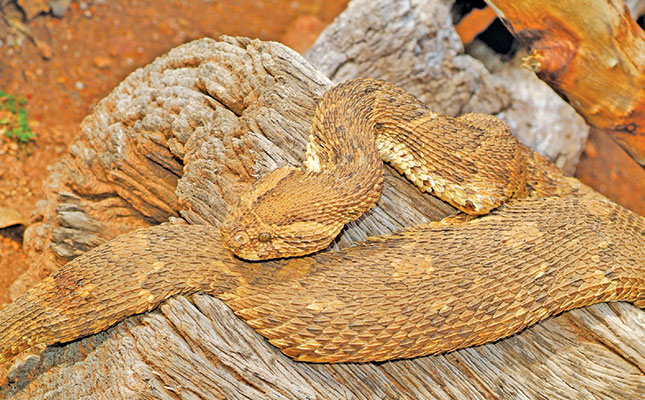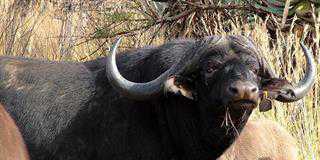
Photo: Johan Marais
Many myths continue to surround snakebites and their treatment.
Fallacious claims often result in consequences entirely unrelated to the bite’s effects on the body.
Traditional medicine
At a recent Travel Doctor’s workshop, a doctor from Limpopo enquired about the efficacy of traditional medicine (herbs and tree bark, in this case) for snakebites.
He had heard of a case where a bite victim had been treated with traditional medicine, and, after receiving the medication, had thrown up a smelly black substance (presumably containing the venom), and then recovered fully.
I was reminded of a discussion I had with 100-year-old Bushman
in the central Kalahari.
His treatment was to give the snakebite victim Condy’s crystals (potassium permanganate) mixed in a glass of water. The patient would then throw up the venom and the snake’s fangs. He explained that some victims recovered from this treatment while others died.
‘Success stories’ using traditional medicines usually involve victims who received little or no venom when bitten, and who would have survived without any treatment. In fact, up to 80% of all snakebite victims survive without anti-venom.
There is absolutely no evidence that traditional medicine has any benefit in the treatment of snakebites.
Modern methods
Some of the more ‘modern’ first aid measures also do not work. In fact, they can be downright dangerous. One such method is to use a tourniquet.
Snake venom is absorbed largely through the lymphatic system, not through the circulatory system, and, applying a tourniquet to cut off blood circulation will not slow down the rate at which venom is absorbed.
A tourniquet can do serious damage; in some cases, its use has led to amputation.
Then there’s ‘cutting and sucking’, as seen in countless cowboy movies. Until recently, one could even buy ‘cutting and sucking’ devices from camping stores.
Fortunately, most of these products are no longer available; they have been tested extensively and simply don’t work.
Cutting around the bite and applying suction cannot remove a significant amount of venom. All it does is cause an open wound that is exposed to infection.
Allergies
Another myth is that more people die from shock and anti-venom than the snakebite itself. Yes, many people are allergic to anti-venom and a small percentage of them may go into anaphylactic shock if treated with intravenous anti-venom.
But doctors counter this by injecting adrenaline. Of all the doctors with experience in snakebites whom I know, not one has had a patient die of anaphylaxis after administering anti-venom.
Yet another fallacy is that being exposed to anti-venom will cause a severe allergic reaction the next time around. In fact, some snake handlers who have received a serious bite try to sweat it out without anti-venom in case they need it for an even more serious bite in future.
This was discussed in detail at a recent snakebite seminar in Spain and shown to be a myth.
The same applies to exposure to venom. Many people who work with snakes become sensitive to venom and sneeze repeatedly when exposed to it.
But this has nothing to do with bites and will not make the handler more vulnerable to venom.
So, what do you do?
Stay calm and get to a hospital – one with a trauma unit – as soon as possible.
Johan Marais is the author of Snakes and Snakebite in Southern Africa. Email: [email protected].













